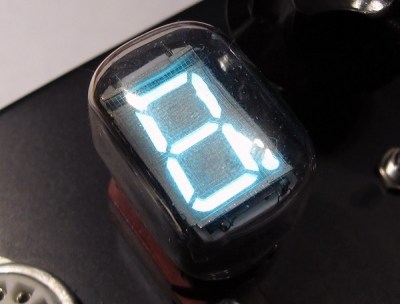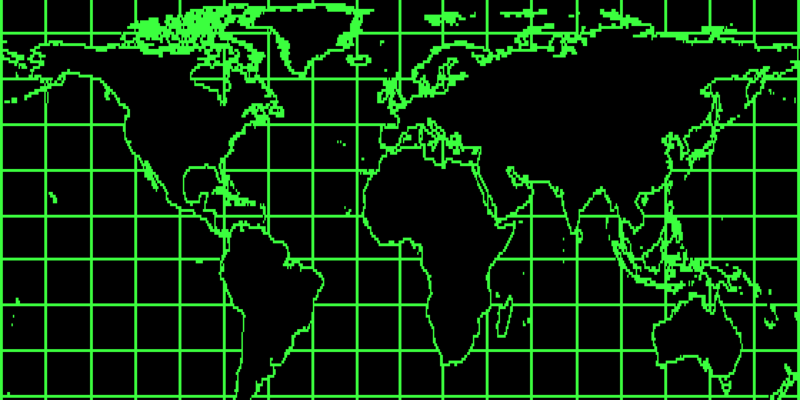The things Hackaday readers come up with and post over on Hackaday.io never cease to amaze us. If you’ve never checked it out, be careful — you can easily spend hours (or weeks) of your life just skimming through the projects that have been logged there. Many of the builds use modern development tools like Arduino and Raspberry Pi, but every so often we come across a project that takes a more difficult road.
That’s the case with [Keplermatik’s] Cold War-era satellite-tracking project, also aptly named Keplermatik. This a build that’s still in progress, which just means you’ve got the privilege of following along as it progresses! What makes this project so special? Aside from the fact that it’s purpose is to track satellites, we think the sole use of vintage tech is a very cool and very ambitious goal.

[Keplermatik] plans to split the satellite-tracking console into two sides: an American-tech side for tracking the satellite’s position, and a Soviet-tech side for tuning the radio and positioning the antenna. The idea is that he’ll get to use vintage technology from both sides of the Iron Curtain. That should lead to some very interesting lessons about how these kinds of systems were designed by each side during the Cold War.
The build is still in its adolescence, but is definitely worth following along with. But, if you’re craving more Soviet tech and need it right now, be sure to check out this post on Russian Cold War vacuum tubes.
















Soooo coool! I will try to get satellite tracking data earlier so it can be put on this James Bond Vilainish globe!!! Awesome! https://hackaday.io/project/10743-the-distributed-ground-station-network
Check out the information on the “Stromberg-Carlson Charactron cathode-ray tube”,
e.g. http://informationdisplay.org/Portals/InformationDisplay/IssuePDF/V04N03-1967MayJunOptimized.pdf
It is amazing what was actually available half a century ago, in the U.S.A.
i love the commercials for tritium buttons, would love a set for a keyboard hehe.
there is a lot of nice information, thank you for sharing.
Remember the HAD post a few days back about the guy upgrading a display with lots of little incandescent bulbs in it? You could buy them new 50 years ago!
Check out page 8 of this issue for the actual advertisement for them showing how they work. http://informationdisplay.org/Portals/InformationDisplay/IssuePDF/V02N06-1965NovDec.pdf
awesome very nice, their archive looks to be an interesting place as long as what you are looking for is something to be looked at.
Creator of Keplermatik here. My excitement for what you have just linked is probably second only to my disappointment that so much of that awesome display technology is probably buried in a landfill somewhere. SO much of the stuff in that magazine belongs in my project!
Those really are great links [Dan#8582394734].
I love the add for the storage tubes; amazing what they could do back then with phosphors and electron guns. :)
Great website!
I enjoyed the link. It was amazing what was available, though you probably had to work with a fairly large corporation to have access to this sort of thing.
Here. This link might help.
Alternatively, if you’re looking for a more “up-to-date” satellite tracking solution, I’ve been using the iOS version TrackSat (I think there’s an Android version also). Works pretty well and has all the info you need for working amateur satellites. There’s also Gpredict for Linux/Max/Windows that works very well.
This is the best tracker I have used, petittrack, back in the Linux Sharp Zaurus PDA days, I hung on to the ‘Z’ til I bought a Nokia N900 but never since had a handheld tracker as good as that. My Z with petittrack and a dual tuner Alinco DJ-580t with a 12v power feed for 5w tx all strapped to a 2m/70cm duplexed yaggi and I could chat on the FM hamsats with the best.
http://www.qsl.net/n1vtn/petittrack.html
There is source on the link but I think it is old QPE, I had hoped for a port to qt4 for the Nokia Maemo N900, but even an android port would be great now. I like that it is simple, gives you the doppler shifted freq and has the sun and moon as sky landmarks for aiming a handheld antenna, only thing missing is automated TLE download and setting position by GPS(the Z didnt have GPS except with a GPS CF card).
Back to topic, this is a cool project and a great hack, especially the Soviet side with Soviet parts.
I would love to see if Keplermatik or others could do an open hardware hack of the cold war era pre GPS&TRANSIT automated electronic sextant/star tracker used on SR-71s, B-52s, and Polaris missiles. Sure you couldn’t do turn by turn navigation but it would be a fun backup on a boat or airplane and cheaper than inertial.